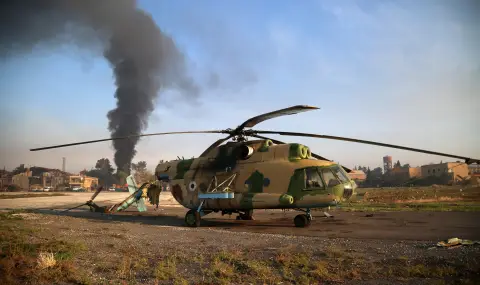After nearly 4 years of lull, the war in Syria was renewed with the surprise offensive of the Islamist, pro-Turkish organization "Hayat Tahrir al-Sham", which captured the second largest city of Aleppo and neighboring villages in two days. The city of Hama is considered their next strategic target.
Meanwhile, the army loyal to President Bashar al-Assad sent heavily armed reinforcements, which began an offensive in the north. So far, government troops have managed to regain several smaller settlements. International Crisis Group analyst Nanar Havach believes that a major counteroffensive and a new hot phase of the war are coming in the coming weeks and months.
How do you explain the rebels' success?
The jihadists took advantage of the fact that the main supporters of the Assad regime currently have other concerns: Russia is busy with its war against Ukraine, Iran - with the conflict with Israel, and Hezbollah - with the consequences of Israeli attacks in Lebanon until the ceasefire is signed. In addition, the Syrian army turned out to be completely unprepared - no one believed that the rebels were capable of launching a new major offensive, Middle East expert Guido Steinberg told German public broadcaster ARD.
Which opposition groups are involved in the fighting?
Currently, “Hayat Tahrir al-Sham“ (translated into Bulgarian as “Committee for the Liberation of Syria“) is the main opposition force. It is an organization that is the successor to “Al-Nusra Front“, which was created in 2017 after breaking away from Al-Qaeda. But the jihadists of “Hayat Tahrir al-Sham“ are a bit more moderate than Al-Qaeda and are a kind of “Syrian Taliban“, Steinberg added.
The United States classifies the group as a terrorist organization. It controls the Idlib region in northwestern Syria, which is home to around four million internally displaced Syrians. After Assad's forces retook much of the country, Idlib is the rebels' last bastion.
However, the current offensive is not just about taking territory from Assad: in parallel, Turkish-backed units of the self-proclaimed Syrian National Army (SNA) - another main opposition force - have launched an operation in the northeast of the country against the Kurdish Syrian Democratic Forces (SDF).
Turkey considers the group a terrorist organization and has repeatedly attacked Kurdish positions there. Ankara also controls some Syrian areas near the border and is likely hoping that the SNA advance will expand the buffer zone into which it can deport Syrian refugees.
Why has the fighting resumed now?
“This pro-Turkish offensive is a consequence of Iran's weakened positions in the Middle East“, Middle East expert Lorenzo Trombetta told DW. Hezbollah, which operates from Lebanon, is weakened after a year-long war against Israel. It is financed, equipped and trained by Iran. Hezbollah signed a ceasefire with Israel a week ago, which has largely been respected so far. In recent months, Israel has also attacked Iran directly and expanded its attacks on Iranian positions in Syria. The supply lines between Syria and Lebanon have also been affected.
Assad's second main ally, Russia, is also involved in Ukraine. Putin is massively increasing military efforts there - probably to create facts in his favor even before the change of government in the US.
The Islamists from "Hayat Tahrir al-Sham" and the self-proclaimed Syrian National Army (SNA) are now probably trying to achieve something similar in Syria with the renewal of fighting there.
Is this part of a larger Turkish plan?
Guido Steinberg is convinced that the successful breakthrough of the jihadists in Syria was coordinated with Turkey. In recent months, there has been a rapprochement between Damascus and Ankara, recalls the expert quoted by ARD. Ankara is interested in returning refugees from Turkey back to Syria. And the Assad regime is setting a condition for Turkey to withdraw its troops from northern Syria. And since these negotiations are at a standstill, the Turkish government may now be trying to increase pressure on Damascus in this way, the observer suggests.
Secondly, it is not excluded that what is currently happening in Syria is part of some larger Turkish strategy. “I suspect that in the longer term Turkey wants to subjugate large parts of northern and eastern Syria and thus keep under control or even eliminate the Kurdish autonomous region in northeastern Syria. There, it rules an offshoot of the Turkish PKK“, Guido Steinberg also tells ARD.
Author: Jennifer Hollais | David El
